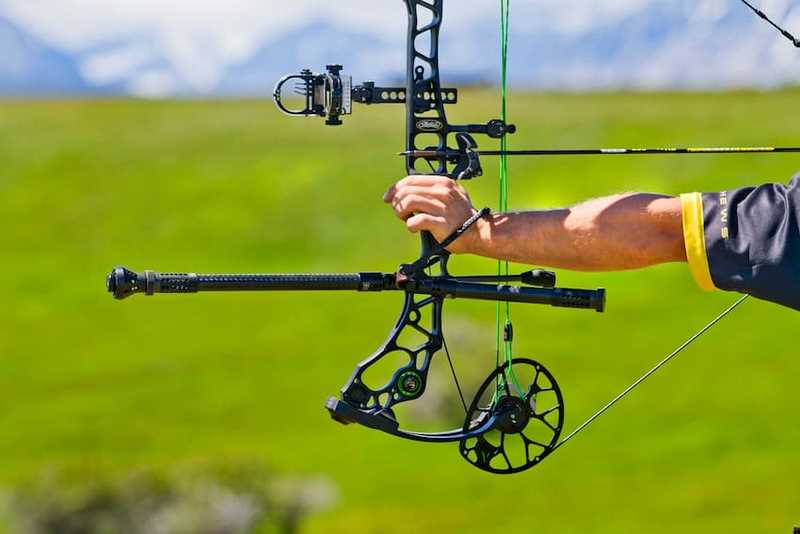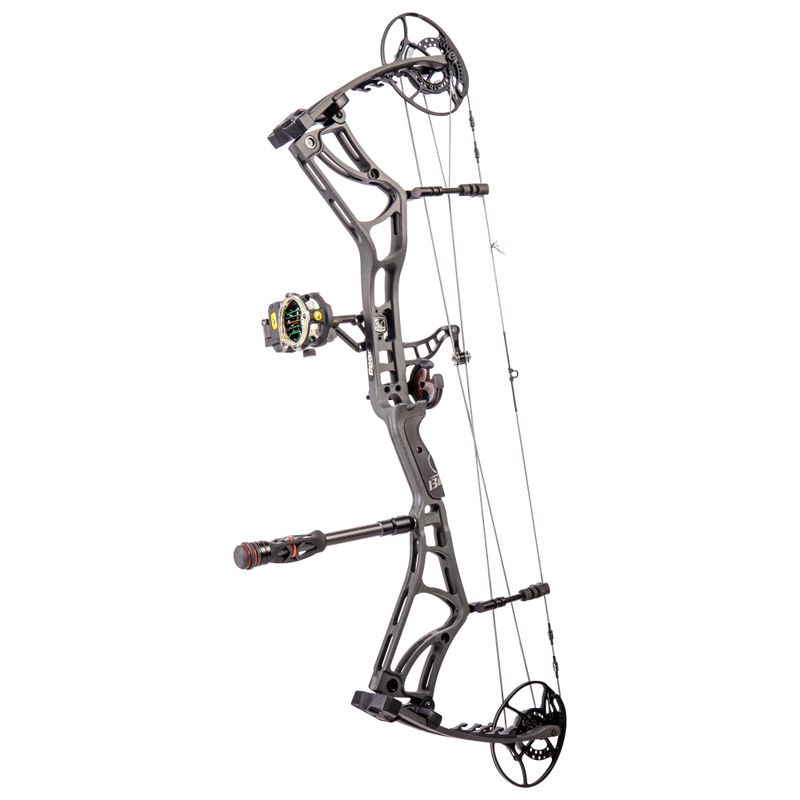Archery Stabilizer Basics: Improving Your Shooting Experience
Archery Stabilizer Basics: Improving Your Shooting Experience
Blog Article
The Ultimate Guide to Selecting the Right Archery Stabilizer for Boosted Accuracy
Among the numerous devices readily available, an archery stabilizer plays a significant role in enhancing accuracy. In this comprehensive overview, we will certainly discover the vital variables to take into consideration when choosing an archery stabilizer for improved accuracy. Whether you are a seasoned archer looking to upgrade your devices or a newbie seeking guidance, join us on this journey as we decipher the secrets to picking the excellent archery stabilizer.
Length: Finding the Ideal Stabilizer Size
Identifying the suitable stabilizer length is crucial when choosing an archery stabilizer for optimum performance. A stabilizer that is also long can make the bow feel top-heavy and tough to manage, while a stabilizer that is too short might not provide enough security and dampening of vibrations.
A longer stabilizer, typically varying from 8 to 12 inches, can give higher security and minimize bow torque. This is especially valuable for archers who shoot with a high draw weight or those who have a propensity to torque the bow during the shot. The included length aids to distribute the weight uniformly and counterbalance any torque or motion.
On the various other hand, a shorter stabilizer, typically in between 4 to 7 inches, provides extra ability to move and quicker reaction. It is favored by archers that shoot with a lower draw weight or those that need even more wheelchair, such as seekers or 3D shooters. The much shorter size enables less complicated movement with limited areas and faster changes.
Eventually, the ideal stabilizer length is an issue of individual preference and shooting design. It is suggested to try out different lengths and observe the effects on stability and accuracy. Consulting with skilled archers or experts can likewise supply valuable insights and referrals.
Weight: Determining the Appropriate Stabilizer Weight
After thinking about the ideal stabilizer length, the following crucial aspect to think about when selecting an archery stabilizer is identifying the suitable stabilizer weight - archery stabilizer. The weight of the stabilizer plays a vital function in improving precision and security during the shot
The weight of the stabilizer affects the balance and control of the bow. A heavier stabilizer can provide increased security and control, specifically for shooters with a propensity for unstable hands or inconsistent shots. It assists to take in the vibrations and recoil created by the bow, lowering torque and decreasing the impact on the arrow's trip.
On the other hand, a lighter stabilizer permits a quicker and much more receptive bow. It can be useful for shooters that prioritize ability to move and rate over security. Lighter stabilizers likewise decrease fatigue throughout lengthy shooting sessions or competitions.
To establish the proper stabilizer weight for your demands, it is necessary to consider your capturing design, physical strength, and bow arrangement. Explore different weights and observing the effect on your shooting efficiency is key to locating the perfect equilibrium.
Eventually, the optimum stabilizer weight will differ for every individual archer. It is advised to start with a modest weight and make adjustments based upon personal choice and capturing results. Bear in mind, the goal is to attain a controlled and secure shot, while likewise keeping comfort and simplicity of usage.
Products: Picking the Right Products for Resilience and Performance
When picking an archery stabilizer, it is important to very carefully consider the materials made use of in its construction to guarantee durability and enhance efficiency. The choice of materials can substantially impact the general top quality and effectiveness of the stabilizer.
One of the most typically used materials for stabilizers is carbon fiber. Additionally, carbon fiber stabilizers are resistant to temperature changes and are less likely to warp or bend over time.
Another popular material for stabilizers is aluminum. Aluminum stabilizers are understood for their longevity and strength. They give superb wetting capacities, decreasing the amount of shock and vibration transferred to the shooter's hand. Light weight aluminum stabilizers additionally supply a large range of customization alternatives, permitting archers to adjust the weight and size to match their choices.
Some stabilizers are constructed utilizing a combination of materials. A stabilizer may have a carbon fiber core wrapped in an aluminum covering. This hybrid style integrates the most effective top qualities of both products, giving optimal stability, resilience, and performance.
Layout: Recognizing the Different Stabilizer Layouts and Their Impacts
Considering the products used in archery stabilizers, it is vital to currently explore the different layouts of stabilizers and their particular effects. The layout of an archery stabilizer plays an essential duty in enhancing precision and minimizing vibration throughout the shot. There are a number of different layouts available in the market, each with its own unique attributes.

An additional prominent design is the side bar stabilizer. This layout entails connecting a short pole to the side of the bow, alongside the major long pole. Side bar stabilizers help in counterbalancing the weight of devices, such as quivers or views, and give extra stability to the bow.
Some stabilizers feature adjustable weights. These stabilizers allow archers to tweak the balance and feeling of their bows by including or removing weights. This feature is specifically helpful for archers that choose a details weight distribution or want to experiment with various setups.
In addition, some stabilizers incorporate wetting innovation to decrease resonance and sound. These stabilizers frequently have integrated dampeners or use materials that soak up vibrations, leading to a smoother and quieter shot.

Devices: Discovering Added Devices for Enhanced Security
To even more enhance security in Get More Info archery, added accessories can be made use of. These accessories are made to function in combination with the archery stabilizer to provide an even greater degree of security and accuracy. One such device is the V-bar or the side stabilizer install. This accessory enables the add-on of a 2nd stabilizer, Resources which aids to reduce and balance the bow torque. By distributing the weight evenly on both sides of the bow, the V-bar helps to reduce any type of undesirable motion throughout the shot.
Another device that can boost security is a bow sling. A bow sling is a strap that connects to the bow and enables the archer to keep a kicked back hold on the bow deal with without the fear of dropping it (archery stabilizer). This kicked back grip assists to decrease muscle stress and enables a more steady and constant shot
Furthermore, a stabilizer weight system can be used to fine-tune the equilibrium and stability of the bow. These weight systems commonly are composed of little weights that can be added or eliminated from the stabilizer to adjust the equilibrium point of the bow. By finding the optimal equilibrium point, archers can achieve a more precise and secure shot.
Final Thought
In verdict, selecting the ideal archery stabilizer involves taking into consideration elements such as length, weight, products, layout, and additional accessories. The ideal stabilizer size and weight will certainly depend on individual preferences and shooting style.
Figuring out the ideal stabilizer length is crucial when choosing an archery stabilizer for ideal efficiency. A stabilizer that is too long can make the bow feel top-heavy and hard to manage, while a stabilizer that is as well brief may not supply adequate security and dampening of vibrations - archery stabilizer.Taking into account the materials utilized in archery stabilizers, it is crucial to currently dive right into the various designs of stabilizers and their respective effects. Side bar stabilizers help in counterbalancing the weight of accessories, such as sights or quivers, and provide extra security to the bow
These weight systems generally consist of small weights that can be added or removed from the stabilizer to change the balance explanation point of the bow.
Report this page